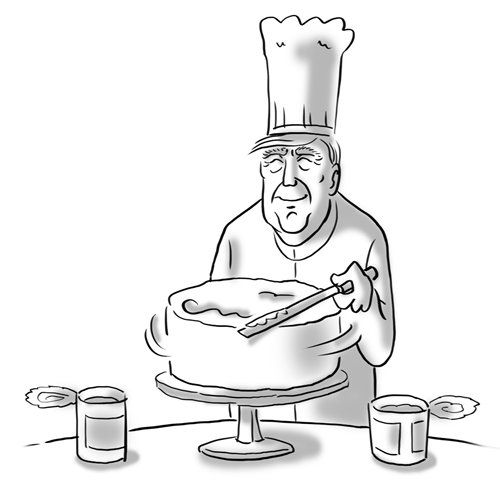By Long Xingchun
Recently, the term “Indo-Pacific” has often been mentioned by senior US officials, including Secretary of State Rex Tillerson, and it was brought up when US President Donald Trump talked with Japanese Prime Minister Shinzo Abe. This indicates it is not a transient idea, but will become a strategy of the Trump administration.
Although the US government hasn’t detailed what the Indo-Pacific concept entails, some observers infer that it may be Trump’s new strategy to replace his predecessor’s rebalance to the Asia-Pacific when it comes to dealing with China. The Indo-Pacific is not a new term the Trump administration coined. In the 1960s, Australian scholars started using it in regional security. Since 2010, scholars in Australian, Indian, Japanese and US think tanks have used it as a geopolitical concept.
As the Barack Obama administration was pushing forward its rebalance to the Asia-Pacific, the Indo-Pacific idea was sidelined, only being mentioned by then secretary of state Hillary Clinton. The core of the Indo-Pacific concept is to establish an “Asian NATO” centered on an alliance between the US, Japan, India and Australia that aims to counter China’s rise and its increasing presence in the Indian Ocean.
There are four reasons why the rebalance to the Asia-Pacific failed. First, it wrongly hypothesized that China’s rise was a threat. Second, it exaggerated the possible confrontations between China and the US while overlooking common interests. Third, the US needs to pay an enormous economic price to draw nations in the region to its side, which will backfire domestically. Last, the US’ move to divide Asia and to produce confrontations didn’t serve the interests of regional countries.
In fact, the US only wants to use India as a pawn to balance China without giving it actual benefits. If the US just changes the name of its strategy but pursues the same strategic goals, it will fail, just as its predecessor did.
It will better serve common interests if industries are transferred from East Asia to the Indian Ocean, and nations like China, Japan, South Korea and Singapore enhance their investment in countries along the Indian Ocean to build a free and open Indo-Pacific region that is not exclusive.
Geographically, Australia is a both Pacific and Indian Ocean country, but most of its population and economy are in the southeast.
Taking the Pacific and Indian Ocean as a whole will facilitate development of its western area and raise its status in the Indo-Pacific. In coastal regions of the Pacific, Atlantic, Indian and Arctic oceans, Indian Ocean countries are the least developed. So in the 1990s, India came up with a “look east policy,” which Indian Prime Minister Narendra Modi modified into the “act east policy.” Obviously, the Indo-Pacific idea can help India get a free ride on the rapid economic growth in East Asia.
Abe is another active advocator of the Indo-Pacific. Except for his intention to confront China, it reflects that he aims to seek new chances in the Indian Ocean region after Japan’s advantages have been weakened in East Asia. As China’s trade and investments in Indian Ocean countries increase rapidly, the region becomes increasingly important for China strategically.
The 21st-Century Maritime Silk Road proposed by China includes the West Pacific, Asia and the Indian Ocean, which is like China’s version of the Indo-Pacific. China is a beneficiary and supporter of the freedom and security of navigation in the Indian Ocean. If the Malabar military exercise involving the US, India and Japan truly aims for security in the Indian Ocean, China should be invited, just as Australia was.
In terms of building the economic Indo-Pacific, there are two options – turning the East Asia Summit (10+8) into the Indo-Pacific, or bringing East Indian Ocean countries into APEC to form a larger Indo-Pacific bloc. “I will make bilateral trade agreements with any Indo-Pacific nation that wants to be our partner and that will abide by the principles of fair and reciprocal trade,” Trump said when addressing the APEC meeting on November 10. The Indo-Pacific he refers to is more likely to work in a geo-economic sense rather than a geopolitical one. Trump wants an Indo-Pacific which he can earn money from, not the other way around.
The author is a senior research fellow at The Charhar Institute and director of the Center for Indian Studies at China West Normal University.


